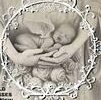Choosing Burial Gowns For a Funeral
Whether your loved one died suddenly or had planned their funeral ahead of time, there are many things to take into account. From casket options to final resting places, there is much to think about. The clothing worn to the service is also important, as it can help comfort mourning family and friends. Burial gowns are a great choice for both men and women as they exude elegance, solemnity and dignity. In addition to a classic black dress, there are other outfits that can be worn for a more casual look. These can include a well-fitting tailored suit or khaki pants paired with a coordinating shirt. Clothes in subtle pastel colors can convey a feeling of peace and serenity, as well. If your loved one preferred casual attire in life, a t-shirt or shirt with a more laid back fit can be a good option. Pair this with a pair of closed-toe shoes and understated jewelry. If your loved one enjoyed a more elegant style, a white ensemble is another great option. This color symbolizes purity and peace, so it can be a beautiful choice for a funeral or memorial. A simple white blouse or dress paired with skirts and dress pants or khakis can be a dignified choice, especially if you choose a modest silhouette. Alternatively, you can opt for a midi-length dress or skirt with a high neckline and long sleeves to ensure that body blemishes from illness are not visible. In a similar vein, you can also choose to wear an outfit that reflects your loved one’s cultural heritage or faith traditions. This is often the case in shrouding cultures, where there are specific garments and pieces of cloth that are used, a particular way knots are tied and prescribed prayers and songs. While some people may not be comfortable with this idea, it can be a lovely tribute to your loved one and also help family members feel more at ease. Some people have even chosen to wear a favorite piece of jewelry or a necklace they had worn with them every day. If your loved ones were avid fans of a particular hobby, you can also find apparel that reflects that passion. There are shirts and dresses that will make the deceased resemble their favorite sports team or their favorite band, as well as suits for those who were dedicated businessmen or women. A Girl Scout troop in Grandview, Oklahoma is taking the concept of burial gowns to a new level. Paige, a 16-year-old Girl Scout, recently earned her Gold Award by sewing more than 110 gowns. The girls used donated wedding dresses and linens, including tablecloths, to sew the outfits. The young seamstresses also made bonnets and charms to accompany each outfit, a small touch that honors the departed’s life in its short time on earth. The girl’s project, called Real Imprints, works with a national and international program that turns repurposed wedding gowns into burial gowns for babies who don’t come home from the NICU.
